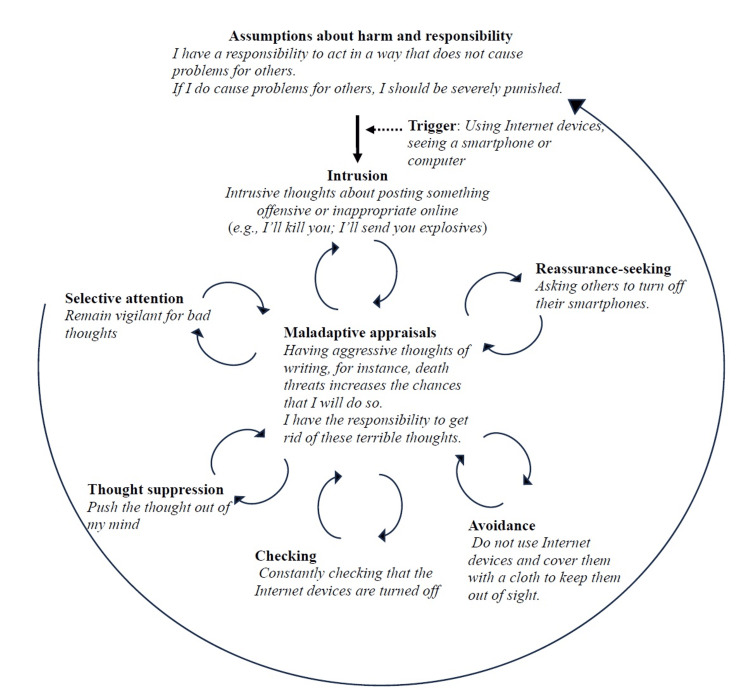Figure 1. Case formulation.
Tom and the therapist created a vicious flower diagram to consolidate the various aspects of understanding obsessive-compulsive disorder (OCD). This figure illustrates the cognitive and behavioural factors that transform normal intrusive thoughts into OCD. By examining this diagram, Tom gained insight into the formation of the vicious cycle, which is crucial for understanding how OCD develops and persists.
Image Credit: Author Ryotaro Ishikawa, based on the "vicious flower" model, introduced by Challacombe et al. [10] (p. 275)

